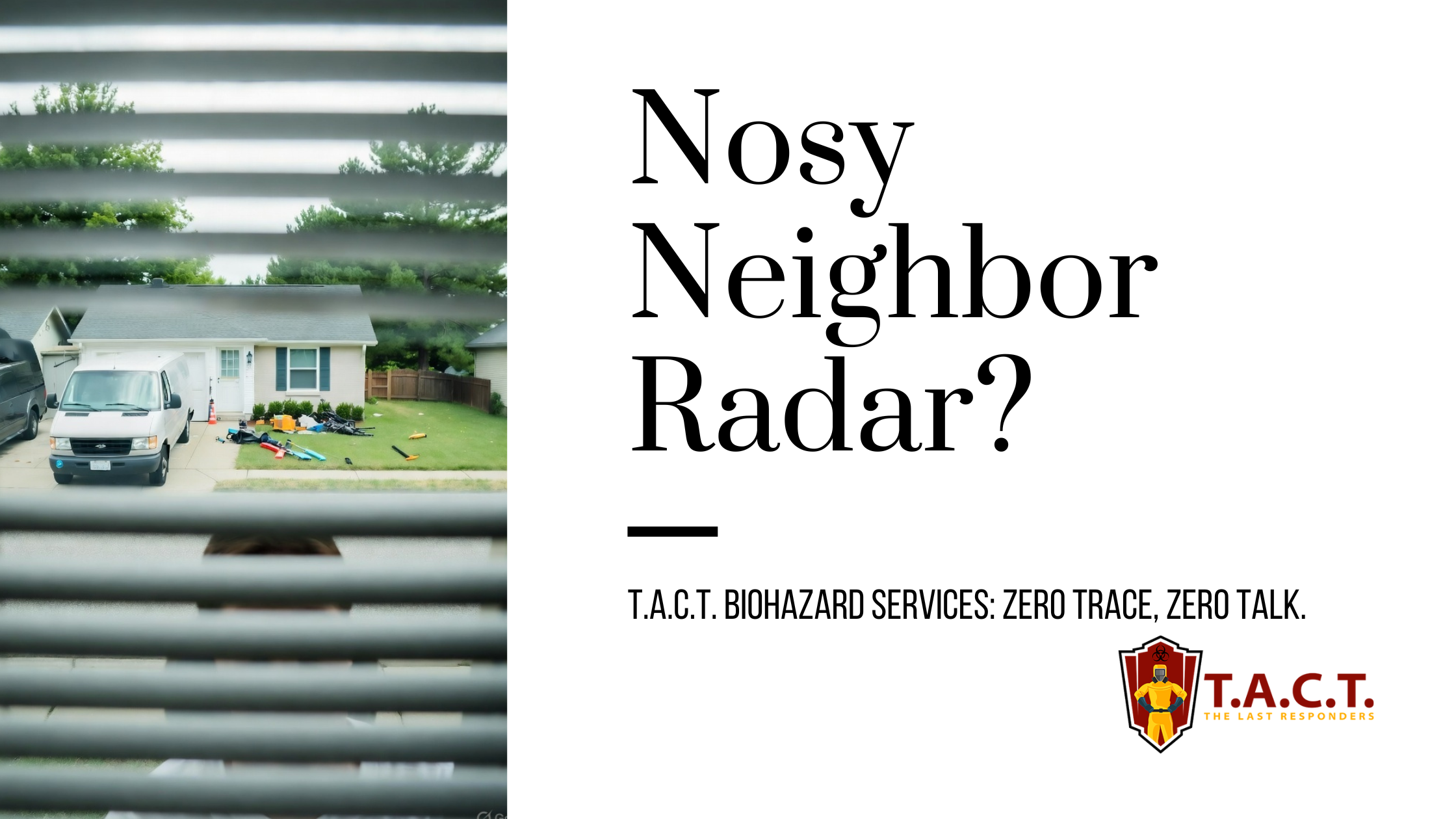Understanding Hoarding Disorder Levels and How to Seek Help

Exploring the Different Levels of Hoarding: A Comprehensive Guide
Hoarding disorders affect millions of individuals, yet they often go unrecognized until the situation becomes severe. This mental health condition leads to the excessive accumulation of items, creating overwhelming clutter that disrupts daily life. Beyond the physical mess, hoarding takes a significant emotional and psychological toll on those affected, as well as their loved ones.
But not all hoarding is the same. Understanding the levels of hoarding and their progressive severity is critical for identifying the problem early and seeking the right support. This guide will walk you through the stages of hoarding, their effects, and possible paths to recovery.
What is Hoarding Disorder?
Hoarding disorder is characterized by an inability to part with items, regardless of their value, leading to clutter and disorganization. Unlike simple collecting or occasional messiness, hoarding disorder is a serious mental illness that significantly impacts daily functioning and relationships. It is often accompanied by mental health challenges such as anxiety, depression, and social phobias.
The disorder can take a toll on essential life activities like personal hygiene, health, and social interaction. Understanding hoarding and its severity levels is vital for addressing it compassionately and effectively, offering individuals a chance to reclaim their lives.
Understanding the Stages of Hoarding
Hoarding disorder doesn’t escalate overnight—it progresses through identifiable stages of worsening clutter and disorganization. Each level underscores how hoarding affects living spaces and daily life, ultimately making normal activities nearly impossible. Severe hoarding, in particular, poses significant risks to health and safety, often requiring professional intervention to manage its severe consequences.
Levels of Hoarding Severity
Level 1
Indicators: Mild signs of difficulty discarding items, minor clutter with no significant impact.
Impact: The home is largely functional, and visitors might not notice much out of the ordinary.
Key Concern: Early indicators of struggling to part with "meaningless" items.
Level 2
Indicators: Noticeable accumulation of objects; rooms begin to look disorganized. Residents may hesitate to invite visitors due to embarrassment. Animal waste may also start to appear, indicating reduced cleanliness and potential health risks.
Impact: Clutter starts to obstruct movement or space, but the home remains mostly functional.
Key Concern: Increased avoidance behaviors and emotional distress over clutter.
Level 3
Indicators: Foul odors, poor hygiene, and narrowed hallways. At least one room becomes unusable. Overflowing garbage is often present, indicating unsanitary and unsafe environments.
Impact: Conditions begin affecting quality of life, and health concerns arise from clutter and sanitation.
Key Concern: Health risks and social isolation deepen.
Level 4
Indicators: Structural damage becomes evident, sewage or plumbing issues, and multiple unusable spaces.
Impact: The home is unsafe for inhabitants, with severe health hazards like rotting garbage or pest infestations.
Key Concern: High-risk living environment requiring urgent intervention.
Level 5
Indicators: Severe structural damage, lack of running water or electricity, and accumulation of human waste. At this level, the presence of human feces is a significant indicator of the extreme health hazards and lack of sanitation.
Impact: At the most severe stage, living conditions become extremely hazardous with imminent safety risks like fire or collapse.
Key Concern: The home becomes entirely uninhabitable.
The Causes of Hoarding
Hoarding disorder is a complex mental health condition influenced by a combination of genetic, environmental, and psychological factors. While the exact causes are not fully understood, research suggests several contributing elements:
Genetics: Individuals with a family history of hoarding are more likely to develop the condition, indicating a potential genetic predisposition.
Trauma: Experiencing traumatic events, such as the loss of a loved one or a natural disaster, can trigger hoarding disorder as a coping mechanism. The accumulation of items may provide a sense of security or control in the face of emotional turmoil.
Brain Structure and Function: Studies have shown that people with hoarding disorder may have differences in brain regions responsible for decision-making and emotional regulation. These neurological variations can make it challenging to discard items, even those with little or no value.
Mental Health Conditions: Hoarding disorder often co-occurs with other mental health conditions, such as obsessive-compulsive disorder (OCD), depression, and anxiety. The intense distress associated with these conditions can exacerbate hoarding behaviors.
Social and Environmental Factors: Social isolation, poverty, and lack of access to resources can contribute to the development of hoarding disorder. Individuals in these situations may accumulate items as a way to feel more secure or to compensate for perceived deficiencies in their environment.
It’s essential to recognize that hoarding disorder is not caused by laziness, lack of motivation, or poor organizational skills. Instead, it is a multifaceted condition that requires a comprehensive treatment approach addressing the underlying psychological, emotional, and environmental factors.
The Effects of Hoarding
Hoarding disorder knows no age or demographic boundaries, but it is more commonly seen in older adults. For those affected, the consequences extend far beyond the cluttered spaces.
Social Isolation: Many individuals with hoarding disorder withdraw from loved ones to avoid judgment or embarrassment.
Health Risks: Unsanitary environments caused by rotting food, garbage, and pest infestations pose significant physical health risks.
Safety Hazards: Obstructed pathways, fire hazards, and structural damage make homes physically dangerous to live in. Prolonged hoarding behavior can lead to exposed electrical wiring, which is a significant fire hazard.
The longer hoarding disorder persists, the more profound its effects become on both the individual’s physical and mental well-being.
Hoarding and Its Connection to Obsessive-Compulsive Disorder (OCD)
Hoarding disorder is frequently linked to other mental health conditions, particularly obsessive-compulsive disorder (OCD) and depression. The intense distress experienced when trying to discard possessions often stems from extreme emotional attachment or fear of losing items that might hold future value. This extreme distress, often referred to as disposophobia, highlights the profound emotional turmoil and intense fear individuals with hoarding disorder face when letting go of possessions.
Tools like the Clutter Image Rating Scale (CIRS) can help professionals and families assess the severity of a hoarding situation and determine the need for intervention.
Seeking Help for Hoarding Disorder
When left unchecked, hoarding disorder can escalate to dangerous extremes. Recognizing the need for external assistance early is vital to avoiding devastating consequences such as eviction or loss of quality of life. Hoarding cleanup is an essential part of addressing the disorder, as it helps manage the physical and psychological challenges involved.
Professional services, including cleaning teams and mental health professionals, provide critical support to tackle the overwhelming cleanup and psychological recovery process.
Working with Mental Health Professionals
Mental health professionals play an integral role in helping individuals address hoarding disorder. Treatment often includes a combination of therapy, counseling, and even medication to manage anxiety or depression. Severe hoarding behaviors can lead to a mental health crisis, where individuals may not recognize the danger of their living conditions and experience a significant decline in personal hygiene and overall health.
Some key benefits of professional intervention include:
Developing strategies to manage the anxiety associated with discarding items.
Encouraging the creation of healthier emotional relationships with belongings.
Providing structure and support for ongoing recovery.
Addressing Hoarding in Daily Life
Daily life can become a battleground for individuals with hoarding disorders. The clutter affects personal hygiene, physical mobility, and social relationships. Finding tangible strategies to manage this can be lifesaving.
Strategies for Recovery
Create a Safe Living Space
Begin by removing hazardous materials and clutter in the home. Safety must always come first.
Develop Organizational Habits
Learn to manage possessions with clear routines and boundaries, such as designated storage areas and decluttering schedules.
Seek a Support System
Friends, family, and community groups can provide emotional support and accountability throughout the recovery process.
Collaborate with Professionals
Engaging mental health experts ensures access to personalized treatment plans for long-term success.
Recovery is a long but achievable path, especially with the right support and resources.
Partnering for a Safer, Happier Life
Living with hoarding disorder doesn’t have to be permanent. The compassionate team at TACT of North Atlanta understands the challenges you or a loved one face and is here to help. With specialized expertise in tackling hoarding, we provide reliable support for cleanup and recovery, always treating clients with the dignity and respect they deserve.
Reach out to us today for professional assistance in creating a safe, clutter-free environment. Together, we can pave the way for a healthier, happier future.
Conclusion
Hoarding disorder is a serious mental health condition that affects millions of people worldwide. Understanding the stages of hoarding, from minimal to extreme, is crucial for identifying the severity of the condition and developing an effective treatment plan. The causes of hoarding are complex and multifaceted, and addressing the underlying psychological, emotional, and environmental factors is essential for successful treatment.
If you or a loved one is struggling with hoarding disorder, it’s essential to seek professional help from mental health professionals who specialize in hoarding treatment. With the right support and treatment, individuals with hoarding disorder can learn to manage their symptoms, improve their quality of life, and achieve a more organized and clutter-free living space.
Remember, hoarding disorder is not a sign of weakness or failure, but rather a treatable mental health condition that requires compassion, understanding, and support. By working together, we can help individuals with hoarding disorder overcome their struggles and achieve a more fulfilling life.
Latest news

Bio Cleaning Services
Read More
Nosy neighbors peeking? T.A.C.T. North Atlanta offers discreet biohazard remediation for rodent infestations, mold, hoarding, and more. Unmarked vehicles, quiet experts, full privacy—24/7 service at 470-781-4775.
Read More
